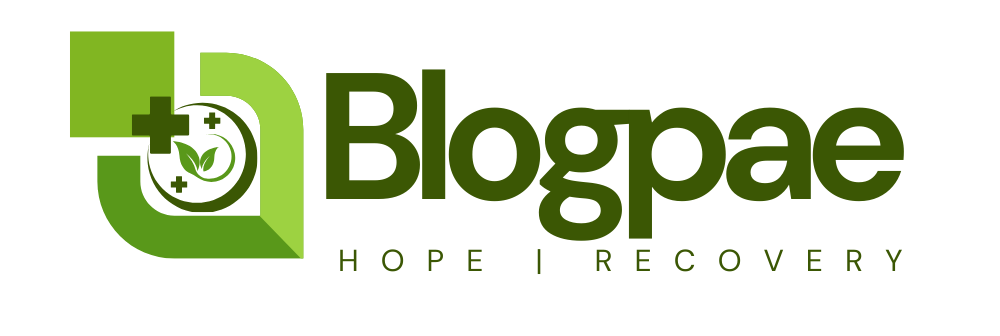Overcoming fentanyl addiction is a challenging journey, but with the right approach, it is achievable. Breaking free from the grip of this powerful opioid requires a comprehensive plan that addresses both physical and emotional dependencies.
The path to recovery involves understanding the nature of fentanyl addiction and implementing strategies to manage withdrawal symptoms, cravings, and the underlying issues that contribute to substance abuse.
Recovery is a personal and often difficult process, but with the right support and resources, individuals can overcome their addiction and regain control over their lives.
Key Takeaways
- Understanding the nature of fentanyl addiction is crucial for recovery.
- A comprehensive recovery plan addresses both physical and emotional dependencies.
- Managing withdrawal symptoms and cravings is a critical component of the recovery process.
- Addressing underlying issues contributes to long-term sobriety.
- Support and resources play a vital role in overcoming fentanyl addiction.
My Rock Bottom Moment with Fentanyl
The moment I hit rock bottom with fentanyl addiction was both devastating and liberating. It was a turning point that made me realize the gravity of my situation and the need for immediate change.
I had been struggling with fentanyl for a while, but it wasn’t until I experienced a series of alarming health scares that I understood the severity of my addiction.
Recognizing I Had a Problem
Recognizing the problem was the first step towards recovery. I had to acknowledge that my fentanyl use was no longer under control and that it was affecting every aspect of my life. Admitting the problem exists is crucial for seeking fentanyl addiction treatment.
Why Traditional Approaches Weren’t Working for Me
Traditional approaches to overcoming fentanyl dependence weren’t effective for me initially because they didn’t address the underlying issues. I needed a more personalized and comprehensive approach that included medical support, therapy, and a strong support system. As one recovery expert noted,
“The most effective recovery plans are tailored to the individual’s specific needs.”
Understanding Fentanyl’s Grip on the Body and Mind
Understanding how fentanyl took hold of my body and mind is crucial to my recovery journey. Fentanyl’s grip on my life was a complex issue that required a comprehensive approach to overcome.
The Physical Dependency I Experienced
Fentanyl’s potency led to a rapid development of physical dependency. I experienced severe withdrawal symptoms, including intense pain and uncontrollable shaking. Medically supervised detoxification was crucial in managing these symptoms.
| Withdrawal Symptom | Severity | Management Strategy |
|---|---|---|
| Pain | Severe | Medication-assisted treatment |
| Shaking | Moderate to Severe | Gradual tapering of dosage |
| Nausea | Moderate | Anti-nausea medication |
Breaking Through the Psychological Hold
Overcoming the psychological aspect of fentanyl addiction required intensive therapy and support. I found that cognitive-behavioral therapy (CBT) was particularly effective in helping me understand and change my thought patterns related to drug use.
By combining medical treatment with psychological support, I was able to break through the psychological hold fentanyl had on me. This comprehensive approach is a valuable fentanyl recovery tip for anyone struggling with addiction.
How to Stop Using Fentanyl: My Step-by-Step Approach
Quitting fentanyl requires a comprehensive approach that involves a clear commitment, a structured plan, and a robust support system. My journey to recovery was not straightforward, but by breaking down the process into manageable steps, I was able to overcome my addiction.
Making the Commitment to Quit
The first step in my recovery was making a firm decision to quit fentanyl. This involved acknowledging the severity of my addiction and understanding the consequences of continuing down that path. It was a difficult decision, but it was the foundation upon which my entire recovery was built.
Creating My Personal Recovery Timeline
After committing to quit, I created a recovery timeline. This timeline outlined key milestones and deadlines, helping me stay focused and motivated. It included short-term goals, such as completing a detox program, and long-term goals, like maintaining sobriety for a year.
Building a Support System That Actually Helped
Building a support system was crucial to my recovery. I reached out to friends and family, joined support groups, and connected with others who were going through similar experiences. This network provided emotional support, guidance, and accountability, making a significant difference in my journey.
Here is a summary of the key components of my recovery plan in the table below:
| Component | Description | Outcome |
|---|---|---|
| Commitment to Quit | Acknowledging addiction and deciding to quit | Foundation for recovery |
| Recovery Timeline | Outlining milestones and deadlines | Staying focused and motivated |
| Support System | Friends, family, support groups, and peers | Emotional support and guidance |
By following these steps and maintaining a steadfast commitment to my recovery, I was able to overcome fentanyl addiction. Seeking help for fentanyl addiction is a courageous step, and with the right approach, it is possible to achieve lasting sobriety.
Medical Support That Made the Difference
Professional medical help was instrumental in my recovery from fentanyl dependence. The journey to sobriety is challenging, and having the right medical support can make all the difference. With professional guidance, I was able to navigate the complexities of fentanyl withdrawal and develop a comprehensive recovery plan.
My recovery was significantly enhanced by the medical support I received. This support was multifaceted, involving various strategies and treatments tailored to my specific needs.

Effective Treatment Programs
Finding the right treatment program was a crucial step in my recovery. I sought a program that offered a holistic approach, addressing both the physical and psychological aspects of fentanyl addiction. Medication-assisted treatment (MAT) was a key component, helping to manage cravings and alleviate withdrawal symptoms.
Medication-Assisted Treatment
Medication-assisted treatment was a game-changer for me. By combining medications like buprenorphine or methadone with counseling and behavioral therapy, I was able to tackle my addiction from multiple angles. This integrated approach helped me stay on track and reduced the risk of relapse.
Managing Withdrawal Symptoms
Managing withdrawal symptoms was one of the most challenging aspects of my recovery. However, with the help of my medical team, I was able to develop effective strategies. These included gradual tapering of medication and the use of non-pharmacological interventions to ease discomfort.
By leveraging these medical support systems, I was able to overcome the hurdles of fentanyl withdrawal and move towards a healthier, addiction-free life.
Practical Recovery Resources I Used
Breaking free from fentanyl’s grip was a challenging journey, but with the right tools and support, it became manageable. My recovery was significantly aided by a combination of traditional support systems and modern digital tools.
Hotlines and Support Groups That Saved Me
I reached out to hotlines and joined support groups, which provided me with immediate assistance and a sense of community. These resources were crucial in helping me stay on track. Some of the hotlines I used included:
- Substance Abuse and Mental Health Services Administration (SAMHSA) National Helpline: A confidential service available 24/7.
- Narcotics Anonymous (NA) Meetings: Regular meetings that offered a supportive environment.
Apps and Digital Tools That Kept Me Accountable
Digital tools played a vital role in my recovery by helping me manage cravings and stay connected with my support network. Some of the tools I found helpful were:
- Recovery Apps like Sober Grid and Recovery Companion that offered community support and tracked my progress.
- Meditation and Mindfulness Apps such as Headspace that helped me cope with stress.
Financial Assistance Programs for Treatment
Financial constraints can be a significant barrier to seeking help, but I was fortunate to find programs that assisted with the costs of treatment. These included:
- Medicaid and other government programs that covered part of my treatment expenses.
- Non-profit organizations that offered grants and financial aid for addiction treatment.
Rebuilding My Life Beyond Addiction
Rebuilding my life after fentanyl addiction required a holistic approach that addressed my physical, emotional, and social well-being. It was a journey of self-discovery, growth, and healing.
Healthy Coping Mechanisms
Developing healthy coping mechanisms was crucial in my recovery. I started practicing mindfulness and meditation, which helped me manage stress and anxiety. I also took up journaling as a way to express my emotions and reflect on my experiences.
- Mindfulness practices
- Physical exercise
- Creative pursuits like art or music
Repairing Relationships
Repairing relationships damaged by my addiction was a challenging but essential part of my recovery. I started by rebuilding trust with my loved ones through open and honest communication. I also sought professional help to navigate complex family dynamics.
- Admitting my mistakes and taking responsibility
- Listening to others and validating their feelings
- Working together to rebuild trust
Finding Purpose and Joy
Finding purpose and joy in sobriety was a significant milestone in my recovery. I discovered new passions and interests, such as volunteering at a local recovery center. I also reconnected with old hobbies and activities that brought me joy, like hiking.
By focusing on these areas, I was able to rebuild my life and create a fulfilling, addiction-free existence. My journey is a testament to the fact that with the right support and resources, anyone can overcome fentanyl addiction and thrive.
Conclusion: My Life After Fentanyl
Overcoming fentanyl addiction has been a transformative journey, teaching me invaluable lessons about resilience and the importance of a support system. By understanding how to stop using fentanyl and committing to a structured recovery plan, I’ve been able to rebuild my life.
The process wasn’t easy, but with the right medical support, practical recovery resources, and a commitment to developing healthy coping mechanisms, I was able to break free from addiction. My experience has shown me that recovery is possible with the right approach and support.
For those struggling with fentanyl addiction, knowing how to stop using fentanyl is just the first step. It’s about creating a new life, one that’s healthier and more fulfilling. With the right mindset and resources, anyone can overcome fentanyl addiction and find a path to a brighter future.
FAQ
What are the first steps to take when trying to stop using fentanyl?
The first steps involve acknowledging the addiction, seeking professional help, and considering medication-assisted treatment to manage withdrawal symptoms. It’s also crucial to build a support system, including support groups and loved ones, to aid in the recovery process.
How can I manage fentanyl cravings during recovery?
Managing cravings can be achieved through a combination of medication-assisted treatment, attending support groups, and utilizing digital tools such as recovery apps. Staying connected with a support system and engaging in healthy coping mechanisms also play a significant role in managing cravings.
What are the benefits of seeking professional support for fentanyl addiction?
Seeking professional support provides access to personalized treatment plans, medication-assisted treatment, and therapy. Professionals can help manage withdrawal symptoms, reduce cravings, and address underlying issues contributing to the addiction, significantly improving the chances of a successful recovery.
How long does it take to recover from fentanyl addiction?
The recovery timeline varies significantly from person to person, depending on factors such as the severity of the addiction, the effectiveness of the treatment plan, and individual resilience. Recovery is a long-term process that requires ongoing support and commitment.
Are there financial assistance programs available for fentanyl addiction treatment?
Yes, there are various financial assistance programs available, including government-funded programs, non-profit organizations, and insurance coverage. These programs can help cover the costs of treatment, medication, and other recovery-related expenses.
How can I rebuild my life after overcoming fentanyl addiction?
Rebuilding life after fentanyl addiction involves developing healthy coping mechanisms, repairing damaged relationships, and finding new purpose and joy in sobriety. Engaging in therapy, support groups, and activities that promote well-being can aid in this process, helping individuals to reintegrate into their communities and rebuild their lives.
What role do support groups play in fentanyl recovery?
Support groups provide a community of individuals who understand the challenges of fentanyl addiction and recovery. They offer a safe space to share experiences, receive support, and learn from others, playing a crucial role in maintaining sobriety and navigating the recovery journey.
Can medication-assisted treatment be effective for fentanyl addiction?
Yes, medication-assisted treatment (MAT) is a highly effective approach for managing fentanyl addiction. MAT combines medications such as methadone, buprenorphine, or naltrexone with counseling and therapy to address the physical and psychological aspects of addiction, reducing cravings and withdrawal symptoms.
Reference




